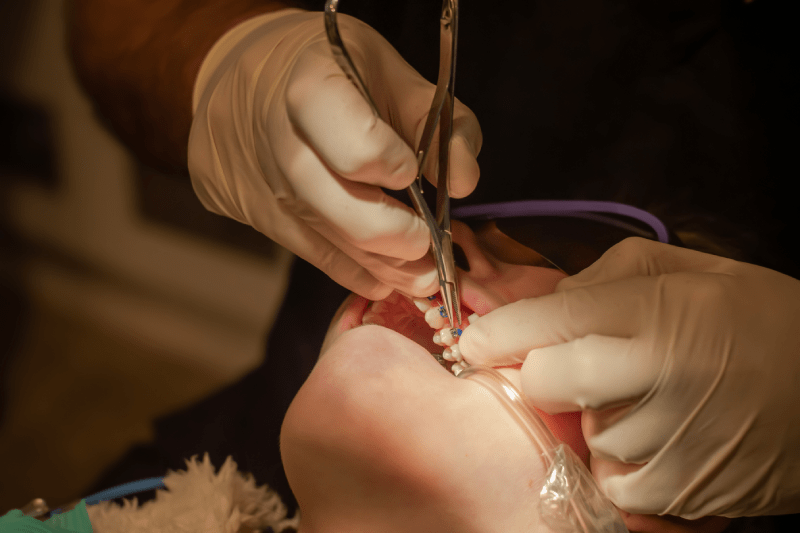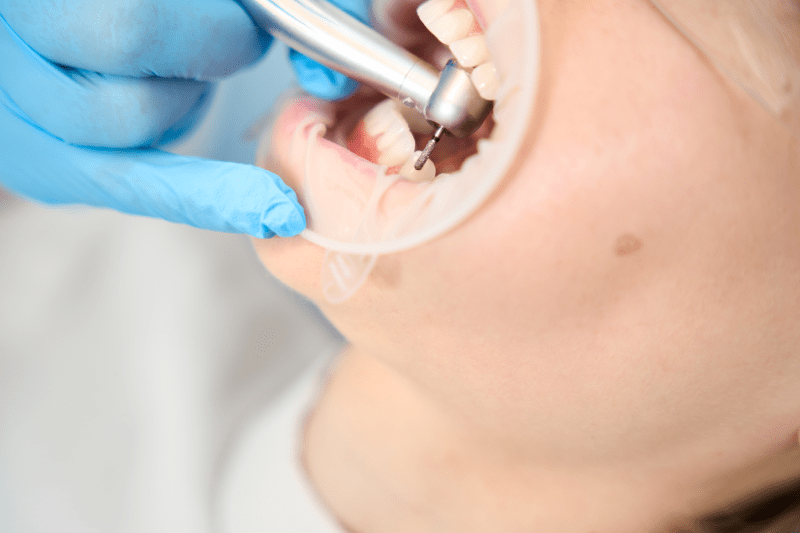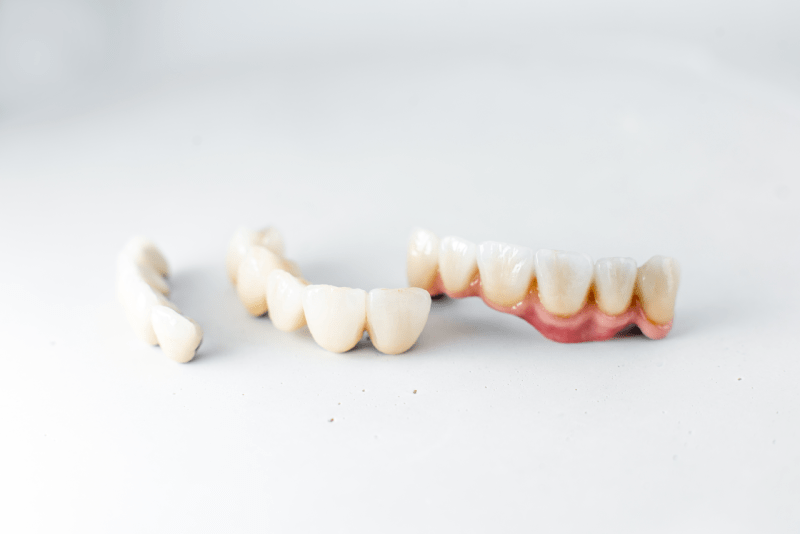What Are Veneers and Why Are They Preferred?
Veneers are porcelain or composite coatings attached to the front surface of teeth for aesthetic purposes. They are used to correct flaws in tooth color, shape, size, or spacing. They make teeth look whiter, straighter, and more symmetrical. They are especially preferred by people with yellowed, stained, broken, or spaced teeth. Since veneers are a procedure that requires minimal tooth abrasion, they make it possible to achieve a natural and aesthetic smile while preserving dental health.
Why Are Veneer Prices So Variable in Europe?
The main reason why veneer prices in Europe are so variable is that each country’s economic structure, labor costs, taxation policies, and living standards are different. For example, in countries with high living standards like Switzerland or Norway, clinic operating costs and doctor fees are very high, while in countries like Turkey, Poland, or Hungary, these costs are quite low. Additionally, the quality of the material used and the technological infrastructure of the clinic are factors that directly affect prices.
Which Are the Most Affordable European Countries for Veneers?
Among the most affordable European countries for dental tourism, Turkey, Hungary, Poland, Romania, and Albania stand out. These countries offer both high-quality service and much more affordable prices compared to Western Europe. Turkey, in particular, is popular with its experienced dentists, modern clinics, and comprehensive package options. Hungary and Poland have a long-standing history in dental tourism. Romania and Albania are also rising markets.
Why Are Veneer Prices in Turkey More Affordable Than in Other Countries?
The main reasons why veneer prices in Turkey are more affordable are the low general living and business costs. Clinic expenses such as rent, staff salaries, taxes, and insurance are much lower than in Western European countries. Additionally, the support provided by the Turkish government for health tourism encourages clinics to offer competitive prices for international patients. This price advantage is provided without compromising on service quality.
How Long Does Veneer Treatment Take in Poland?
Veneer treatment in Poland can usually require two to three visits. In the first visit, the dentist performs a consultation, prepares the teeth, and takes an impression. This stage usually takes a few days. While the veneers are being prepared in the lab, the patient uses temporary veneers. In the second visit, about a week later, the veneers are permanently bonded. The treatment duration can vary depending on the patient’s and dentist’s schedule and the lab’s work speed.

How Much Does a Veneer Cost in Hungary?
The price of a veneer in Hungary varies according to the clinic’s location, the type of material used, and the dentist’s experience. Generally, the cost of a porcelain veneer can range between €250 and €600. These prices can be higher for more durable materials like zirconia. This price includes steps such as preparing the tooth and permanently bonding it, but additional fees may be requested for extra treatments.
Is the Quality of Veneers in Romania Up to European Standards?
The quality of veneers in Romania is monitored in accordance with European Union standards. Modern clinics in the country generally use high-quality porcelain or zirconia materials imported from Germany or Switzerland. Romanian dentists receive international training and follow the latest techniques. Affordable prices do not mean that quality is compromised. However, when choosing a clinic, it is important to get detailed information about the dentist’s experience and the materials used.
Is Albania a Popular Option for Veneers?
Albania is a destination that has been growing in popularity in recent years for dental tourism. The country offers affordable options for patients coming from the Western Balkans and Italy. Clinics in Albania have invested in modern equipment and internationally trained dentists. Veneer prices are quite competitive, similar to those in Turkey. This makes Albania an attractive option for patients seeking both affordable and quality service.
How Is the Total Cost of Veneer Treatment Calculated?
The total cost of veneer treatment includes more than just the cost of a single tooth. First, the per-tooth fee is multiplied by the number of teeth to be treated. Then, pre-treatment costs such as general anesthesia, additional surgical procedures (like tooth extraction or filling), temporary veneers, and X-rays are added. Finally, travel, accommodation, and food expenses required for the treatment should also be included in the budget.
Are Zirconia Veneer Prices Higher Than Porcelain Veneers?
Yes, zirconia veneer prices are generally higher than porcelain veneers. Zirconia is a more durable material, more resistant to cracking and chipping. It also has an aesthetic appearance that is more similar to a natural tooth. Although porcelain veneers also offer aesthetically pleasing results, zirconia is preferred especially for back teeth or in cases that require more chewing force.
Are Lumineer Prices Different from Traditional Veneers?
Lumineers are thinner in structure than traditional veneers and offer advantages such as minimal or no tooth abrasion. This helps to preserve the natural tooth tissue. As Lumineer is a registered brand, its prices are generally higher than traditional veneers. Traditional veneers, on the other hand, are produced in the clinic’s own or partner labs, and their costs can be more flexible.
Is the Pre-Treatment Consultation Fee-Based?
Many clinics, especially to attract international patients, offer the first pre-treatment consultation and examination service for free. In this consultation, the dentist evaluates your oral health, takes an X-ray, and prepares a personalized treatment plan for you. A price quote is also provided at this stage. However, some clinics may charge a fee for advanced diagnostic tools. Therefore, it is important to confirm this in advance.
What Hidden Costs Can Be Added to the Veneer Cost?
Hidden costs that may arise in addition to the veneer cost include additional treatments such as root canal treatment, tooth extraction, filling, or gum shaping (gingivectomy). These may be necessary to improve oral health before the veneer treatment. Another hidden cost is travel, accommodation, food, and local transportation expenses. Therefore, it is important to make a budget plan that covers all these costs.
How Does the Brand of Material Used Affect the Price?
The brand of material used in the treatment directly affects the quality and price of the veneers. Internationally recognized and high-quality brands like Ivoclar Vivadent are more expensive. These brands are known for offering long-lasting and aesthetic results. Less known or local brands may be more affordable. Clinics usually offer different brand options according to the patient’s budget.
How Much Do Accommodation and Airfare Costs Amount to When Traveling to Turkey for Veneers?
Accommodation and airfare costs when traveling to Turkey vary according to the season, duration of stay, and city choice. In a popular city like Istanbul, accommodation and airfare may be higher than in other cities. On average, a round-trip airline ticket can range from €150 to €500, and a one-week hotel stay can range from €200 to €700. These costs should be included in the budget in addition to the treatment price.
Can the Entire Treatment Be Completed in a Single Trip?
Veneer treatment is usually completed in two trips. In the first trip, the teeth are prepared, impressions are taken, and temporary veneers are placed. The second trip is planned for the permanent placement of the veneers. There can be a gap of a few days or weeks between the two trips. However, some clinics with advanced technology may allow patients to complete the entire treatment in a single, short trip. This is possible thanks to digital dentistry technology.
How Does the Clinic’s Experience Affect Pricing?
The experience of the clinic and the dentist directly affects pricing. A dentist with years of experience and numerous successful cases may naturally charge a higher fee for their services. This is of great importance for ensuring the quality and reliability of the treatment the patient will receive. When comparing prices, it is important to pay attention not only to the cost but also to the dentist’s expertise and the clinic’s references.
Is Payment by Credit Card Possible for Veneer Treatment?
Yes, payment options for veneer treatment generally include various ways such as credit card, bank transfer, or cash payment. Most patients prefer secure payment methods like credit card or bank transfer. Some clinics may also offer installment plans, especially for high-cost treatments, but these options may be limited for foreign patients as they are usually tied to local banks.
Are Other Treatments Necessary for Oral Health Before Getting Veneers?
Veneer treatment cannot be applied immediately to patients with gum disease, cavities, or other oral health issues. Such problems must be treated first. Procedures like professional cleaning, fillings, or root canal treatment before the veneer procedure are of vital importance for the longevity of the veneers and the preservation of oral health. These additional treatments will be reflected as an extra cost on the veneer cost.
Are There Additional Costs for Post-Treatment Care and Check-ups?
Post-treatment care and check-ups usually vary according to the service package offered by the clinics. While some clinics may offer one or two free check-up sessions in the first year, others may charge an additional fee for each check-up. Regular check-ups and proper oral hygiene are very important for the longevity of the veneers. Therefore, it is necessary to consider these possible additional costs in long-term budget planning.
How Long Do Veneers Last?
The lifespan of porcelain veneers generally ranges between 10 and 15 years, but this period can be extended with proper care and regular check-ups. Zirconia veneers can last longer as they are more durable than porcelain. This period depends on the patient’s attention to oral hygiene, regular check-ups, and habits that protect their teeth (like teeth grinding or nail biting).
Is Veneer Treatment Painful?
Veneer treatment is generally a painless procedure. The dentist applies local anesthesia during the preparation of the teeth to prevent the patient from feeling any pain or discomfort. In this way, the patient remains awake and comfortable during the procedure. After the effect of the anesthesia wears off, a slight sensitivity or pain may be felt, but this usually subsides on its own within a few days and can be controlled with painkillers.
Is It Easy to Find English-Speaking Dentists for Veneer Treatment in Europe?
Yes, it is quite easy to find English-speaking dentists and clinic staff, especially in countries where dental tourism is well-developed, such as Hungary, Poland, and Turkey. Clinics that accept international patients often employ multilingual staff or professional interpreters to facilitate communication with foreign patients. This prevents misunderstandings during the treatment process and makes the patient feel safer.
Is Veneer Treatment Covered by Insurance?
Since veneer treatment is considered an aesthetic procedure, it is generally not covered by health insurance. However, in a case of a medical necessity, such as the repair of a broken or damaged tooth, your insurance may cover a portion of the costs. It is important to contact your insurance company before starting the treatment to find out what costs are covered.
What Is the Best Season for the Treatment?
The best time for veneer treatment depends on the patient’s own schedule. However, for those who want to combine the treatment with a vacation in a tourist country like Turkey, spring and autumn months may be preferred. In these seasons, the weather is milder, and tourist places are less crowded. This way, you can both complete your treatment and have a relaxing vacation.
What Kind of Complications Can Patients Encounter During Veneer Treatment?
Although rare, some complications can occur during veneer treatment. The most common ones include chipping or breaking of the veneers, sensitivity in the teeth, and gum inflammation. Sensitivity is usually temporary. If a veneer breaks, it can be repaired or replaced by the dentist. Gum inflammation can occur as a result of poor oral hygiene. It is important to follow the dentist’s instructions to minimize possible complications.
Why Are Veneer Prices So High in Countries Like Switzerland?
The main reason for the very high veneer prices in countries like Switzerland is the high cost of living and the high standards in the healthcare sector. Doctor salaries, clinic rents, taxes, and insurance costs are much higher than in other countries. Additionally, the materials used in these countries are generally of the highest quality, and investments are made in the latest technologies. Therefore, while the quality of service is at the highest level, the costs also increase proportionally.
Is a Warranty Provided for Veneer Treatment?
Yes, most reputable clinics offer a warranty for veneer treatment. This warranty varies according to the type of material used and the clinic’s policy. Generally, a warranty period is given against defects related to the material or workmanship. This warranty may offer free repair or replacement in case of chipping or falling off of the veneers. However, for the warranty to be valid, regular check-ups and following the dentist’s instructions may be required.
How Should Teeth Be Cared for After Veneer Treatment?
The care of teeth after veneer treatment should be similar to that of natural teeth. It is important to brush your teeth twice a day, use dental floss, and use an antiseptic mouthwash regularly. Although veneers are resistant to stains, it is recommended to avoid excessive consumption of colorful foods like coffee, tea, and red wine. Additionally, it is important to stay away from habits like nail biting or pen chewing.
How Should One Choose a Clinic When Getting Veneers Abroad?
Choosing a clinic when getting veneers abroad is of vital importance for the success of the treatment. When choosing a clinic, attention should be paid to international accreditations (like JCI), the dentist’s expertise and experience, the quality of the materials used, and previous patient reviews. It is also important to find out if the clinic offers support for post-operative follow-up and possible complications. A reliable clinic will share all this information transparently.
How Important Is the Aesthetic Result When Getting Veneers?
The aesthetic result is one of the most important factors when getting veneers. The dentist’s aesthetic sense and experience directly affect the success of the smile design. In this process, the patient’s expectations must be correctly understood, and a suitable plan must be made. Many clinics use technologies that allow the patient’s smile to be digitally simulated before the treatment. In this way, the patient can see the result of the treatment in advance.
Can Teeth Whitening Be Done Together With Veneer Treatment?
Since the color of veneers is permanent, teeth whitening cannot be performed together with veneer treatment. If you have color differences in your teeth, teeth whitening is done first, and then the color of the veneers is chosen to match the whitened teeth. This ensures a homogeneous and natural look in the entire mouth.

How Does the Gum Shaping Procedure Affect the Veneer Cost?
The gum shaping (gingivectomy) procedure is a surgical procedure performed to give the gums a symmetrical and aesthetic appearance. This procedure may be necessary if the patient’s gums are asymmetrical or if too much gum shows when they smile. Gum shaping increases the success and aesthetics of the veneer treatment, but it is reflected as an additional cost. The cost of this procedure varies depending on the extent of the correction to be made.
Is Veneer Treatment Applied to Children?
Veneer treatment is generally an aesthetic procedure applied to adults. Since children’s teeth are still in the development stage, the application of veneers is not recommended. It can be applied to permanent teeth that have completed their development. In young patients, orthodontic treatments or less invasive methods are usually preferred to correct aesthetic problems. This is important to preserve the natural development of the teeth.
What Are the Two Most Important Factors for Veneer Treatment?
The two most important factors for veneer treatment are quality and experience. Price is, of course, a decision-making criterion, but compromising on quality can lead to more costs and disappointment in the long run. Quality materials and an experienced dentist’s expertise ensure that the veneers are long-lasting, healthy, and aesthetic. Therefore, when researching prices, it is necessary to always prioritize the clinic’s reliability and the dentist’s expertise.



